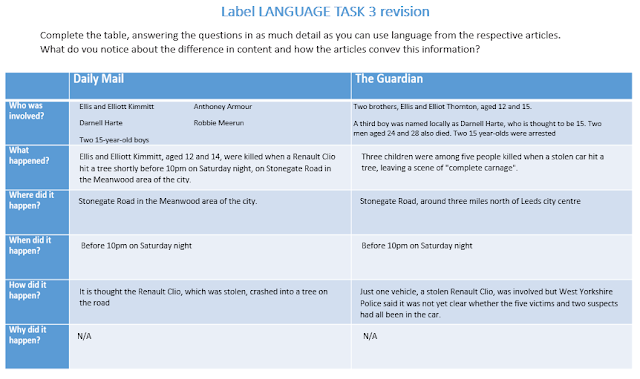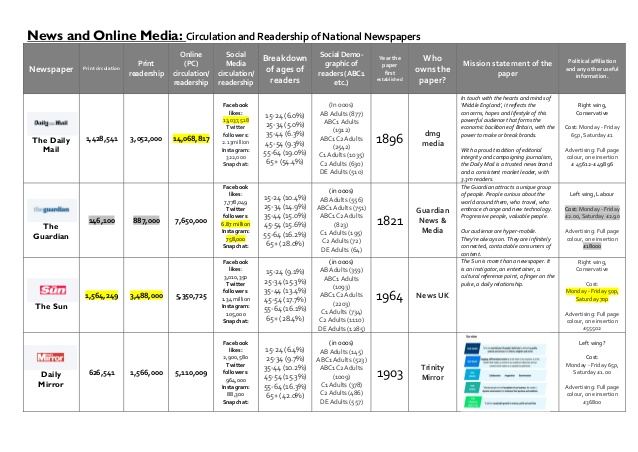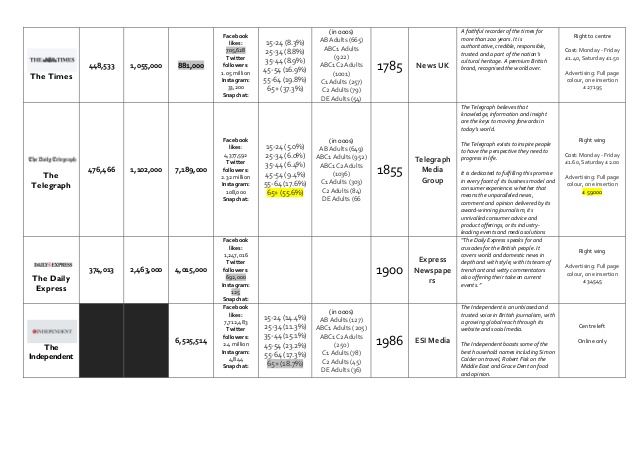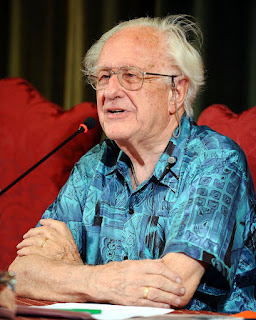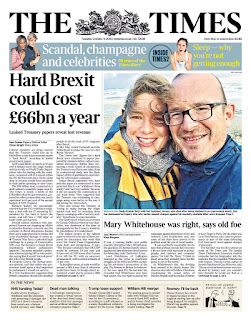http://www.telegraph.co.uk/news/2017/11/26/five-killed-including-three-children-stolen-car-crashes-leeds/
Thursday 30 November 2017
Online Language News
http://www.dailymail.co.uk/news/article-5118189/Five-people-killed-stolen-car-crashes-tree.html
http://www.telegraph.co.uk/news/2017/11/26/five-killed-including-three-children-stolen-car-crashes-leeds/
http://www.telegraph.co.uk/news/2017/11/26/five-killed-including-three-children-stolen-car-crashes-leeds/
Tuesday 28 November 2017
Monday 27 November 2017
The Social Media Effect
News on Social Media is:
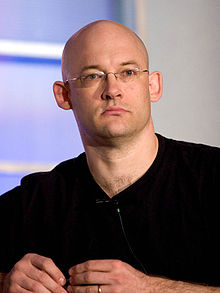
Clay Shirky:
Media used to be distributed one to one or one to many in a group of colleagues or friends.
With the invention of the internet and the rise of social media news reporting, media has become many to many as groups of people on comments and public posts interact with each other and discuss their personal views and the views of other people in the comments
- More accessible , therefore quicker and better than newspapers
- Participatory media as people can comment and react to the news with feedback to the publisher.
- The use and growth of 'We Media' as the public report on news headlines before they break.
- Democratisation of the news , less lying in the news as people can prove the truth fr5om eye witness accounts being published on twitter and other social medias.

Clay Shirky:
Media used to be distributed one to one or one to many in a group of colleagues or friends.
With the invention of the internet and the rise of social media news reporting, media has become many to many as groups of people on comments and public posts interact with each other and discuss their personal views and the views of other people in the comments
Monday 20 November 2017
How to spot Bias in an Newspaper ?
The 8 ways to spot Bias in a newspaper:
- Bias through choice of photos , captions and camera angles (does the person look empowered? weak? foolish? etc.)
- Bias through placement - is it on the front page, or hidden on page 15? How long / thorough is the article
- Bias through word choice and tone (is it sympathetic or critical)
- Bias through headlines - what is the headline article, and how is the article pitched through the headline?
- Bias through source control - who have they interviewed / asked for information?
- Bias through names and titles- nicknames, respectful terms etc.
- Bias through selection and omission - which articles are included and left out?
- Bias through statistics and crowd counts - how statistics are manipulated to make a point.
Friday 17 November 2017
Wednesday 15 November 2017
Politics and the Newspapers
Right Wing :
- Traditional values - love the past (royals, veterans etc)
- 'Survival of the fittest' - we should be able to keep the money we earn, because we deserve it.
- Don't believe in benefits/welfare for all
- Don't want the NHS, or state schools --> want it to all be privatised
- Tied to Christian beliefs - anti-abortion beliefs, anti-gay marriage.
- Pro Brexit - anti-immigration
- Not worried about the environment
- Pro-nuclear weapons
Left wing:
- Optimists - visionaries of the future (forward looking)
- Anti-Brexit, Pro-Europe, pro-immigration, pro-multiculturalism
- 'Welfare State' benefits, "for the many not the few"
- Higher taxes - especially for the rich
- Hate tax dodging
- Looking for equality
- Idealists
- Pro-nationalisation
- Fight for women's rights and gay rights
- Very concerned about the environment
Owen Jones, Left Wing Journalist
'The UK press is largely run by a very small group of very right wing media moguls who defend the status quo of which they are part . If you are on the left and ant to change society, the media will always come for you'
Monday 13 November 2017
Newspaper Circulation and Facts
I was unable to find some facts about the Breakdown of age of the readers and the mission statement of the paper so I used Miss' example as a completed version:
Thursday 9 November 2017
News Article Analysis
The 5 Ws of journalism -
WHO is the story about?
WHAT is the story about?
WHERE did the story happen?
WHEN did the story take place?
WHY did it happen?
The framework of a newspaper article is as follows:
WHO is the story about?
WHAT is the story about?
WHERE did the story happen?
WHEN did the story take place?
WHY did it happen?
The framework of a newspaper article is as follows:
How has the following article been constructed:
Narrative of the article: Reveals information in such a way as to keep the reader interested but also to aid their understanding of what is going on.
Structure of the article: Short paragraphs are important in news reports and each one is used to develop the narrative of the story. There is also a structure to news stories in that all the important info is given at the start and less important details are added later. In this example, the important info is that a coroner will not release Brady’s body until he is satisfied his ashes won’t be scattered on the Moor. Arguably less important information comes later such as how he died.
Headline of the article: They are an important hook to capture the audience and encourage them to pay attention to the article. There is an assumption in this headline that the audience will know who Brady is, and the word ‘moor’ will remind them if they have forgotten.
The Intro of the article: Like the headline, the hook should grab the audience’s attention and encourage them to want to read the rest of the article. Intros are usually very short – maybe 30 words – and should be able to be read and digested quickly and easily. The intro sums up the main point of the article – in this case the discussion of Brady’s possible final resting place.
Focus of the article: Journalists often present stories from a human interest angle, putting people at the centre of their stories. Quotes are often used to give a human touch by emphasising the importance of the people in the story. In this instance, Brady is the focus but the sympathy clearly lies with the victims and their families. A quote from one of the victim’s brothers shows this.
Wednesday 8 November 2017
Broadsheet VS Tabloid

The Guardian:
(Broadsheet - Left wing Labour supporter)
The Guardian has a heavy political approach to their news reporting which can be seen in the main article on the front page of the 8th November 2017. The Guardian consists of a large coverage of articles on the front page as apposed to being photograph based such as a tabloid like The Sun. Due to The Guardian being a Broadsheet, the Guardian tries to report on more hard news reports such as the political environment and the economy rather than soft news like celeb gossip and sports news. The Guardian markets to the A, B ,C1 audiences as it is a tabloid that wants to interest the higher intellects of the public. The age demographic for the Guardian is 25 - 40 as its left wing views appeal more the a younger audience.
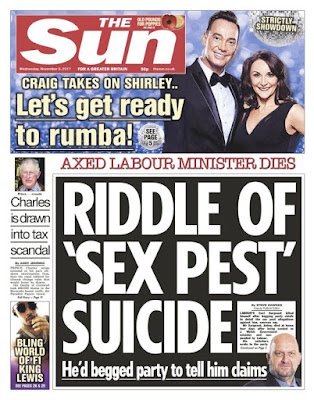
The Sun:
(Tabloid - Right wing Conservative supporter)
The Sun has a very soft news approach to their reporting due to them being a tabloid. This can be seen from the front page of the November 8th 2017 edition with the high photograph to written text ratio, the photograph being a picture from night time TV, Strictly, which is soft news. The Sun is a tabloid so therefore tries to market themselves to the C2, D ,E demographics with mainly reporting on soft news to try attract the attention of more lower class buyers who want to know all of the celebrity gossip or sports news. Tabloids such as The Sun are losing buyers due to the celeb gossip appearing first on social medias such as twitter therefore making tabloids and newspapers obsolete as people have already heard about the news for free earlier. Tabloids such as the Sun try market themselves to the age demographics of 25-30 and 55-65 as the celeb gossip appeals more to the 25-30 year olds but the right wing views appeal to more of the older generations who believe in traditionalism and the government.
Comparisons of both:
Masthead: The masthead of The Guardian is bold and lowercase to show sophistication and calmness rather than the shouty bold uppercase text of the sun. The uppercase shows the flashy eye catching nature of the sun.
Layout and Style: A Broadsheet like the Guardian seems very sophisticated due to it having a lot of text compared to photography and its dull colour scheme , making it appeal to the higher demographics. The Sun however is a tabloid, meaning that it tries to be very eye-catching with it having a lot of images and photos on the front page to interest the viewer to make them buy it over other papers.
Language: The white and blue , slightly duller tones of the Guardian connote sophistication and cleverness. The same can be said with the amount of text on the page, connoting cleverness and smartness. The bold and bright colours of the Sun connote the flashing and extraverted nature of the Sun and their target demographic. The use of big bold text also denotes the big and flashy view of the Sun.
Monday 6 November 2017
Galtung and Ruge: Theorists
Gatlung and Ruge came up with the theory of News Values , a point scoring system for a news story, with a high scoring story being at the front of the paper and a low scoring story being at the back of the paper. There are 8 different criteria that the News value theory,
Threshold - The bigger the impacts and the reach of the story
Unexpectedness - Off the wall and unexpected news
Negativity - 'If it bleeds , it leads' , bad news sells quick
Elite person/places - Important people/powerful nations
Unambiguous - Story about something where no one will be confused about it
Personalisation - Attached people / names to victims
Proximity - You care about the people in England/local. Less about people in boring / in less known countries.
Continuity / currency - Stories that are already in the news continue to run and are updated.
Threshold - The bigger the impacts and the reach of the story
Unexpectedness - Off the wall and unexpected news
Negativity - 'If it bleeds , it leads' , bad news sells quick
Elite person/places - Important people/powerful nations
Unambiguous - Story about something where no one will be confused about it
Personalisation - Attached people / names to victims
Proximity - You care about the people in England/local. Less about people in boring / in less known countries.
Continuity / currency - Stories that are already in the news continue to run and are updated.
Gatekeeping
Gatekeeping is a term applied to editing and filtering process where decisions are made to let some information 'pass through' to the receiver (audience) and other information remains barred.
How news publications get the news?
How news publications get the news?
- Leaks/leads (phoning in)
- We media (reported on social media)
- Investigative media (sending out journalists to see if any news will break or not)
- Press releases (groups contacting the news publications with events happening)
- Ambulance chasing (Journalists chasing after ambulances to report the happenings and interview the grieving family)
Friday 3 November 2017
BFI Southbank Talk
I got these notes from Rob Miller's talk on the OCR and Eduqas A level media course:
Film:
What makes a mainstream film?
Film:
What makes a mainstream film?
- Star Marketing
- High Budget
- Established Director
- CGI
- Known company behind the film (Disney)
- Family Friendly
- High Quality Soundtrack
- Wide/saturated distrubution (distrubuted all over the world)
- Safe genre(a film easily marketed to audiences)
- 1 of the Big Six
What makes a independent film?
- Niche marketing, small target audience
- No CGI
- Regional representation
- Not meant to be entertaining, meant to show a political message
- Funded by a range of different organisations
- Crowd funding smaller independent films
- Low budget
- On location shooting, no studio work
- Not a safe genre, social realism
- More critical success (Awards + Reviews) than commercial success
Key Terms For Film:
Distribution / Distributer : Getting films out to cinemas, like disney being the distributer
Digital Technology : Social media marketting
Synergy : 2 organisations / 2 parts of a film working together. Straight Outta Compton - film helping the music sell and vice versa.
Convergence : Where a film is available/consumed and can be merketted on a number of cross media platforms.
Straight Outta Compton:
Is it a mainstream film or not?
Is it a mainstream film or not?
- Black American history
- Synergy - music and film sell each other
- Semi star marketing (Dr Dre, Eazy E and Ice Cube)
- Political statements (Institutional Racism)
- Global distribution by the Big Six
- Young male target audience
- Emotive representation
- Little man VS Bigger man story
- Highest grossing music biopic ever
- Medium production budget ( $50m budget)
Video Games:
David Gauntlett: 'Video Games dont have an audience do they'
Growing older gaming demographic
Key Terms For Video Games:
AAA games : high production/marketed games
Publisher : Distributer of the game
Developer : Maker
Designer : People working with the games software
PEGI : Video game classification
Engine : A program used to build a game off of
Oligopoly : A group of companies that make a AAA game together
Minecraft -
Started as Indie, became huge
125 million copies sold
14 -25 , ABC demographic
Assassins Creed III -
Historic
Violence Sells
Asperational PEGI rating 18, people want to play an 18 to see what passes as an 18
Newspapers:
Conventions of a tabloid:
- Restricted Language Code
- Dramatised facts
- High ration to photographs compared to text
- Varied Fonts
- Subjective Epistemologies - opinionated ways of telling a story
1 company owns most local newspapers in the UK, Trinity Mirror
Soft news - Celeb news, Not very hard hitting, TV analysis, Sport, Voyeuristic Crime
Hard news - Economy, Boring news, Education, Politics, Health care, Business
We media - Public reporting the news through social media before news publications can.
Radio:
Zoo format - Bits and Pieces , Presenter lead e.g. Nick Grimshaw (Radio 1)
Kiss, huge competition to Radio 1 Breakfast show
PSB - Public Service Broadcasting (BBC)
Wednesday 1 November 2017
Newspapers
Conventions of a Broadsheet newspaper:
 Conventions of tabloid newspapers:
Conventions of tabloid newspapers:
- Formal
- Clean layout
- Small, lots of font
- Minimal Pictures
- Contents above the master head
- Serious Press/Headlines
- Aimed at A, B ,C1 demographics
- Little colour on front
 Conventions of tabloid newspapers:
Conventions of tabloid newspapers:- Flashy, colourful
- Aimed at C2, D ,E demographics
- Big pictures, dramatic
- Quotes from the article
- Lots of different title
- Colloquial Language
- Popular press
- Celeb gossip
News Introduction
Current News happening in the world today:
Newspaper overview:
- Terror attack in NYC, Lower Manhattan. Declared sympathies with ISIS however ISIS haven't claimed the attack as their own. Attackers own motive with 8 killed , 50 injured.
- Sexual assault allegations, Harvey Weinstein & Kevin Spacey & Labour MPs sexually assaulting women and men of younger ages.
- Catalonia, declaring independence , Spain refusing Catalonia independence , fighting in the streets and at polling stations.
- Bake off winner leaked before airing
- V-Fest rebranded
Newspaper overview:
- Newspapers have been around since mid 17th century (probably earlier in various forms)
- Until the 20th century, newspapers were the primary means of bringing news to the public.
- Unlike news broadcasting , newspapers do not have to be imparcial they are allowed to have political bias.
- They are largely self regulating . they have a regulating body - IPSO, the independent press standards organisation ( was the press complaints commission )
- Leveson Inquiry 2011 - in response to allegations of phone hacking and tapping at The News of the World ( amongst other ) was carried out. it was suggested a code of conduct and tighter controls to be imposed - nothing has happened about this ( apart from the new IPSO instead of PCC )
Subscribe to:
Posts (Atom)
